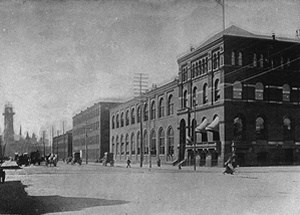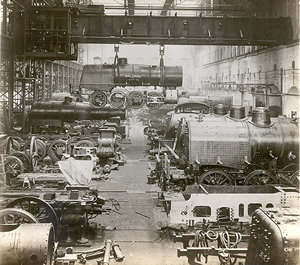
"From roughly 1880 through the 1920s, Philadelphia's industrial districts supported an array of mills and plants whose diversity has scarcely been matched anywhere in the history of manufacturing" (Workshop of the World published by the Society for Industrial Archeology). The city hosted both small firms and huge enterprises. Many of them were in North Philadelphia--a vast area of the city that included, for example, the Baldwin Locomotive Works. Baldwin occupied 20 acres in the vicinity of Broad and Spring Garden Streets, south of today's West Poplar neighborhood. In its heyday before World War I, Baldwin employed as many as 20,000 people and made as many as 3,000 steam engines a year. (In 1928, the company moved its operations entirely to Eddystone, outside the city; nine years later, Baldwin's old red-brick structures in North Philadelphia were demolished.)
Mingled with the manufacturing facilities were acres of two- and three-story row homes owned by factory workers. As Philadelphia's industrial base gradually weakened, deterioration and abandonment of housing began to emerge as serious problems, and demolition of structurally dangerous buildings continued unabated. The City's redevelopment plans of the 1970s included an area newly named West Poplar, positioned about a mile north of City Hall and west of the Reading Company railroad alignment (see Tour Stop 1).
By
the early 1990s, through attrition and incremental demolition, West Poplar
comprised mostly empty land and vacant residential, commercial, and industrial
buildings. The Redevelopment Authority of the City of Philadelphia began
assembling parcels for development, including the relocation (to nearby
places) of remaining residents and businesses. ![]()
![]()

Baldwin
Locomotive Works, looking south from Broad and Noble
Streets, c. 1900.

Erecting shop at Baldwin
Locomotive Works.